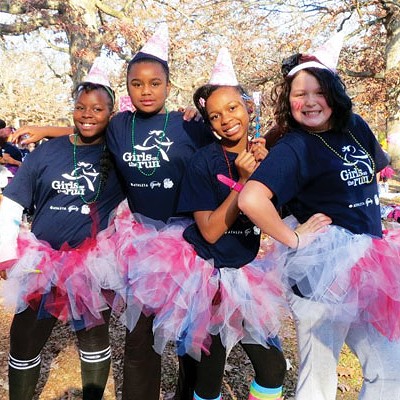Attachment Parenting is the hotly debated parenting philosophy that emphasizes close physical proximity between caregivers and children (co-sleeping, babywearing, and breastfeeding) as well as parental responsiveness to a child’s signals of distress. Critics say that it is too demanding of parents and leads to clingy, spoiled children. Proponents argue that children are better able to explore, learn and develop in a healthy way when they have a close emotional bond with their primary caregiver.
I first learned about Attachment Parenting from a college girlfriend. This was long before I had a child of my own. I remember looking at her, taking in the fact that her daughter was literally attached to her in a sling at that moment and seemingly every moment since the day she had been born, and thinking, no thanks, this is not for me. Although I didn’t yet have a child of my own I was fairly sure that, when I did, I wouldn’t want to be physically attached to it 24/7 like my girlfriend was to hers. The whole thing smacked of codependence to me.
Attachment Parenting did not resurface in my life until I became pregnant and a different girlfriend gave me The Baby Book by Dr. William Sears, patron saint of the Attachment Parenting movement, and proclaimed it “the only baby book you’ll need.” “But your kids are so independent!” I exclaimed. It’s true. Her children are exceptionally confident and well-behaved, the opposite of the clingy, needy children that I was sure Attachment Parenting would produce. “Exactly,” she replied. “You build a secure attachment with them when they are small, and that allows them to grow into secure, independent kids.”
The name “Attachment Parenting” can be misleading, conjuring up images of overindulged children and martyr-mothers. In reality, the term derives from the attachment theory of developmental psychology.
Based on more than 60 years of research, attachment theory holds that infants are born “hardwired” with a need for physical closeness and nurturing during the first few years of life. Attachment Parenting is based on the idea that when these needs are met consistently and appropriately, the child’s emotional, physical and neurological development is enhanced. A child who grows up with a secure attachment to his or her caregivers is better able to explore the world with confidence. Hence, the goal of Attachment Parenting is to produce independent, compassionate kids who have healthy bonds with the important people in his or her life.
Although Attachment Parenting can seem daunting when presented as an academic philosophy, as Nancy Weichert of Springfield said, “I think it’s actually the most natural way of parenting. I think lots of people are doing it without knowing.” Andria Crawford-Whitehead agrees. “One of the funniest moments from when our son was a newborn, was when someone asked my husband if we were ‘Attachment Parenting.’ This person briefly explained to him what that meant and my husband just simply said, ‘Huh, I thought that was just called ‘parenting.’ Which I think gets at the ‘why’ we do what we do: it feels like the natural biological choice to us.”
There are seven core practices that Dr. Sears recommends to create and promote a secure attachment between parents and children, which he labeled “The Seven B’s:”
Birth bonding – lots of physical closeness in the hours, days and weeks immediately following birth.
Babywearing – keeping baby close in a carrier to promote less fussiness in infants and increased sensitivity in parents.
Breastfeeding – breastfeeding provides optimal nutrition for infants and releases attachment-promoting hormones in the mother’s brain.
Bedding close to baby – sleeping near or with the baby to minimize nighttime separation anxiety. (Families who choose to co-sleep should consult with their doctor to be sure to avoid situations that can lead to increased risk of Sudden Infant Death Syndrome).
Belief in the signal value of baby’s cries – Responding sensitively to a baby’s cries with the understanding that they are crying to communicate a need. This builds trust in the infant that his or her needs will be met.
Beware of baby trainers – encouraging parents to follow their instincts while parenting rather than relying solely on the advice of experts.
Balance – Being careful to tend to your own needs and the needs of your marriage or partnership even as you raise a small child.
This list can seem daunting, and critics have attacked Attachment Parenting as demanding too much of parents. The key to successful implementation, as with anything, is flexibility. Dr. Lauri Lopp of SIU Family Medicine says, “Attachment Parenting provides a very positive style of parenting. However there is some evidence to show concern for maternal depression in mothers who try to follow exact recommendations of AP, without allowing it to be flexible in their own lives. They hold themselves to a standard and feel increased stress and failure if they don’t meet the mark exactly. Despite all of the important aspects for the child, there must be time allowed to foster the parent relationship as well, so that in focusing too much on the child, the marriage doesn’t feel the strain.”
Indeed, many mothers who practice Attachment Parenting stress balance and flexibility as the key to its success within their family. Ashley Hustava-Schacht says, “After doing research I tend to pick and choose techniques that make sense to my husband and me.”
Parents who lean towards Attachment Parenting also report that they find it makes parenting easier, not harder. For example, many mothers find the convenience of babywearing superior to the challenges of maneuvering a child around in a car seat or stroller – the author included, despite my early skepticism. Andria Crawford Whitehead says, “I don’t understand the use of the word ‘sacrifice’ when talking about the principles of AP. That word conjures thoughts of loss and sadness. If you are trying aspects of AP and feel like it’s adversely affecting your life, mood and parenting experience, then it’s not worth it. Tweak what you are doing to get things in balance for you.”
Most proponents of Attachment Parenting agree that the heart of the matter is creating a strong bond with their child in a way that is natural and flexible for each family. Mom of four Hillary Gorrell says, “For me, Attachment parenting is vital for two things: trust and communication.” Nancy Weichert agrees. “The heart is creating a solid emotional bond – my daughter always knows we have her back. She’s actually never gone through a clingy phase and I believe we have attachment parenting to thank for that.”
From a clinical perspective, Dr. Lopp has observed the benefits of sensitive and responsive parenting in her patients: “There is no doubt that providers see countless benefits in the health of children that are deeply bonded to their parents and who have their emotional needs addressed.” Above all, Dr. Lopp encourages parents to use their loving instincts when responding to their children: “The important thing for all parents to remember is that when they are educated and loving, many times they have the best solution for their own child, that many times cannot be found exactly in a book.”
To parents who are considering Attachment Parenting, Mary DiMaggio provides the following advice: “A myth of Attachment Parenting is that you have to sacrifice everything – your life, your career, your bed, etc. – for your child, and that’s just not true. If you read Dr. Sears’ literature on Attachment Parenting, he emphasizes trying different techniques and using what works for you. There’s no one right way to do anything. I would encourage people to do a lot of research on Attachment Parenting, and then talk to their spouse about trying the different techniques. A lot of Attachment Parenting is trial and error, and what works for some might not work for others. But the principles work for everyone: acceptance, a gentle approach and establishing a strong emotional bond between parent and child.”
Erika Holst is the curator of collections at the Springfield Art Association and mother to Anders, 1.




















